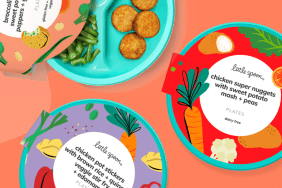Unfortunately, even someone with the best intentions to eat healthfully can be easily fooled by the food industry’s very sophisticated marketing tactics. Don’t assume that just because something comes from a health food store that it’s good for you. It’s very important to not only read nutrition labels, but also to read ingredient lists to know exactly where the calories, nutrients and more are coming from. Here’s a look at eight foods you’ll want to pay particularly close attention to the next time you consider buying them.
Gluten-Free, Natural, Vegan and/or Organic Cookies
If it looks and tastes like an Oreo, it’s probably not something you want to make a priority in your diet — even if it’s packaged in a bag labeled organic, vegan, natural or gluten-free.
Dried Fruit
People who need to monitor their sugar levels aside, it’s very important for most of us to meet the daily fruit requirements, but dried fruit is far from the ideal vehicle. Dried fruits have significantly more calories and higher sugar levels than fresh fruit, and they’re often treated with sulfites to preserve their coloring when they’re dried. Further, serving sizes are very small and most packages make it tempting to consume straight from the bag — a surefire way to encourage overeating. Lastly, watch out for added sugars (including ones from added fruit juice), which turn dried fruit into something just a few steps up from traditional sweets.
Health Bars
Most health bars are just candy bars with different marketing tactics attached. If a bar is covered in chocolate and loaded with sugar, fat, sodium and calories, it’s not something you want to consume on a regular basis. Many of the so-called nutrition bars are also filled with artificial ingredients and additives (it’s especially important to avoid bars with a long list of unpronounceable ingredients). Read labels very, very carefully because even when a bar has a clean list of ingredients with high amounts of fiber, protein and omega-3 essential fatty acids, like Health Warrior’s Chia Bars, for example, the serving sizes are often so small that you can easily eat two or three bars and still find your cravings unsatisfied. And by that time, you’ve consumed hundreds of calories and a considerable amount of sugar.
Cereal
All-natural and organic mean nothing when you’re buying cereal. You can buy an organic cereal at your local health food store and if you look at the label, it wouldn’t be surprising to find that it has in excess of 12 grams of sugar per serving. Moreover, many brands deceptively consider a serving size to be 30 grams, and few people eat just 30 grams of cereal. Here’s a look at some cereals to avoid and some that are better options. Also note that while some cereals are high in calories, it’s important to factor in quality of ingredients. A cereal like Qi’a Superfood may not be low in calories, but calories coming mostly from hemp and chia seeds are very different than calories coming mostly from high fructose corn syrup.
Frozen Yogurt
Don’t be fooled, frozen yogurt is often times just as bad in terms of calories, saturated fat and sugar as traditional ice cream (though it tends to be lower in cholesterol). If you’re going to eat frozen yogurt, make sure you are aware that it should be considered a treat. Click here for more information on which frozen desserts are best and which are the worst.
Prepared Sandwiches and Salads
These come in an infinite variety, so they can’t be ruled out across the board, but be very mindful of mayonnaise and other condiments as well as dressings, which are often high in sodium, calories and fat. Many salads also come loaded with dried fruits and candied nuts. With salads and sandwiches, the simpler the better. Also note that most breads labeled “multi-grain” or “wheat” are made with refined grains, meaning you’re not getting very many nutritional benefits.
Foods Labeled Fat-Free
If you want to eat something healthy that’s fat-free, opt for whole foods that don’t require labels, like fruits and vegetables. Packaged foods labeled fat-free tend to be high in sugar and salt. Why? Because when you take out the fat found in most foods, they don’t taste good, so manufacturers have to compensate by adding in sugar and/or salt (usually both!). If something sounds too good to be healthy — like fat-free cookies, gummy bears or muffins — it all but certainly is.
Pre-Packaged Cold Cuts
Cold cuts, like turkey and ham, are a great addition to most diets. Unfortunately, when you buy them pre-packaged in those shrink-wrapped containers, you’ll find that they’re very high in sodium and preservatives like sodium nitrate, which has been linked to cancer.








